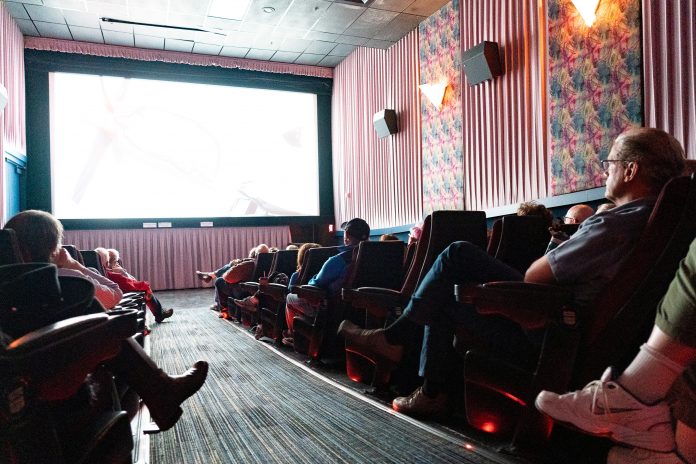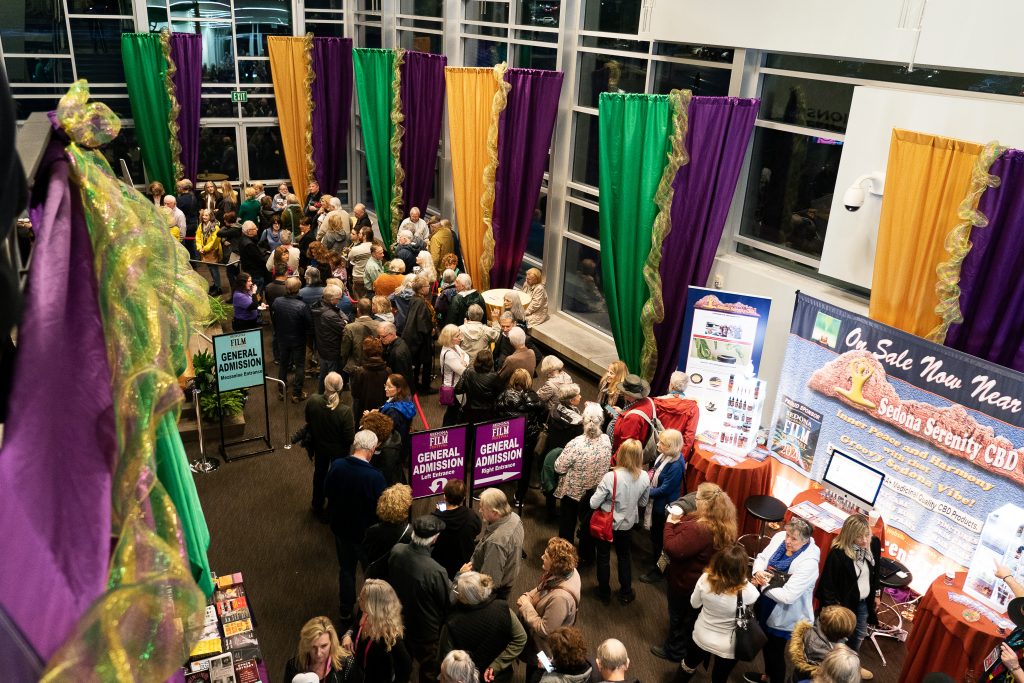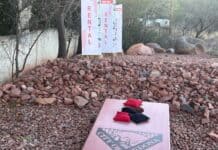
As the old saying goes, “The show must go on” — but safely.
With so many local events having been canceled this year as a result of COVID-19, a big question among many has been whether or not the Sedona International Film Festival would take place early next year. The answer is yes, but unlike the previous 26 festivals, this one will have a different look.
“ If the pandemic has spiked severely by February, obviously the plans change, but as of right now we’re having a festival,” SIFF Executive Director Patrick Schweiss said. “We don’t know what’s going to be happening four months from now. If there is a spike, if the country is shut down, if they’re shutting down venues or any significant risk, we will move to an all-virtual festival to keep everyone safe.”
The plan, at least for now, is to have a hybrid approach to the festival that is scheduled for Saturday, Feb. 20, through Sunday, Feb. 28, 2021. The goal is to have a scaled down, live event while also offering films virtually for those who may not be able to get tickets or feel safer viewing the films from the comfort of their own home.
“We felt we owed it to the community to start getting back to some kind of normalcy in a safe, controlled way,” he said. “All the CDC guidelines are what’s guiding us.”
To start, there will be fewer films shown — 85 to 90 compared to this 2020’s festival with 170 short and full-length films. The festival will be utilizing the Mary D. Fisher Theatre with a maximum of 37 available seats per showing due to COVID restrictions. At Harkins Theatres Sedona 6, the two larger screens will be used, allowing a maximum of 50 patrons in one and 75 in the other. As for Sedona Performing Arts Center, which seats 750, that will be limited to 250 to 300 guests. All theaters will adhere to social distancing guidelines and have assigned seating, which is intended to reduce lines forming in the lobbies of the theaters prior to each film.
Organizers are also looking at having showings in Cottonwood at the Old Town Center for the Arts. Schweiss said there has also been talk of possibly having a drive-in choice, but with the uncertainty of the weather that time of the year, it may not be an option.
“With the reduced number of films, it means our incredible screening committee will have a much tougher job,” Schweiss said. “Quite frankly, people will truly be getting the best of the best because they have to narrow it down.”
Those that may not make the festival committee’s cut will then be shown throughout the year at Mary D. Fisher Theatre.
Ticketing for films will be done differently this year, as well. There will be a Gold Pass, which allows the holder unlimited entry to films both in person and virtually, a virtual-only pass and then tickets to individual films. Ticket packs that include 10 to 20 films have been eliminated due to the limited seating capacity. Individual ticket sales will begin the first week of February and by then, Schweiss said, the festival will have a better idea of where things stand in terms of the pandemic.
“At that point, if needed, we can pull the plug on the live version and go totally virtual,” he said, adding that otherwise they will continue with the hybrid model. “If we can get more capacity [based on state guidelines] that would be awesome, and we’ll add back the two other theaters at Harkins.”

In each venue masks will be required and each will be cleaned with air scrubbers and other methods between showings. Northern Arizona Healthcare has agreed to look at all the festival’s safety protocols and may have staff on-site to make sure moviegoers feel safe and comfortable. And, all staff and volunteers will have their temperatures taken prior to each show.
While films can be shown, the large nightly galas at area restaurants and resorts will not take place. They may be replaced with a smaller reception at the beginning and end of the festival for top pass holders with capacity limits. The VIP lounge at Sedona Rouge, where the filmmakers, sponsors and donors are treated to lunch and dinner during the festival, will not be open. Schweiss said they are looking at other options like per diem or boxed lunches from the area restaurants that usually donate the lunches and dinners.
“This has been very, very difficult,” Schweiss said of planning an event this size, along with all the uncertainties four months in advance. “We don’t take this lightly.”
Over the last few months, SIFF has hosted several donor engagement meetings and then a pair of gatherings with sponsors to gauge their interest and address concerns.
“We told them we realize it’s been a rough year and asked whether or not it was insensitive of us to ask for their support,” he said. “Or, are they looking at us to establish some sort of normalcy? Overwhelmingly, every single sponsor we met with was, ‘Please do the film festival. Yes, do it safely. Yes, scale it back. But do it.’ They all said they’d support us and that they’re here for us. The businesses and supporters in this town are absolutely phenomenal.”
In addition, SIFF sent out surveys to theater members asking their interest in the festival and their comfort level. The vast majority said they’d like a scaled-back, hybrid version. Schweiss and staff took the feedback from all three groups and presented it to the SIFF board and used that in moving forward.
While staff and the board wanted to stay optimistic that they’d be able to host a festival, there was talk about canceling it altogether. This year’s festival went unscathed — barely. A week after the festival ended on March 1, many cities and states began canceling events as the pandemic grew.
“Talk of canceling didn’t go very far simply because in the back of our minds we knew we could go virtual,” Schweiss said. “Canceling it came up but in everyone’s heart, nobody wanted to do that — it would be like getting socked in the gut.”
The idea of postponing it until later in the spring was also broached. He said organizers realized that doing so would be a bad decision for two reasons. The first is that the festival is held during a slow time in Sedona’s tourism season, thus giving many businesses a nine-day financial boost. Second, hotels would not be able to donate rooms because spring is the busiest time of the year.
Schweiss ended by saying that they are trying to make the best of a bad situation.
“The easiest solution would be to cancel, end of story and none of us have to think about this,” he said. “But moving forward with it is the right decision. It’s going to be a crazy learning curve the next three-and-a-half months but it’s worth it.”





















